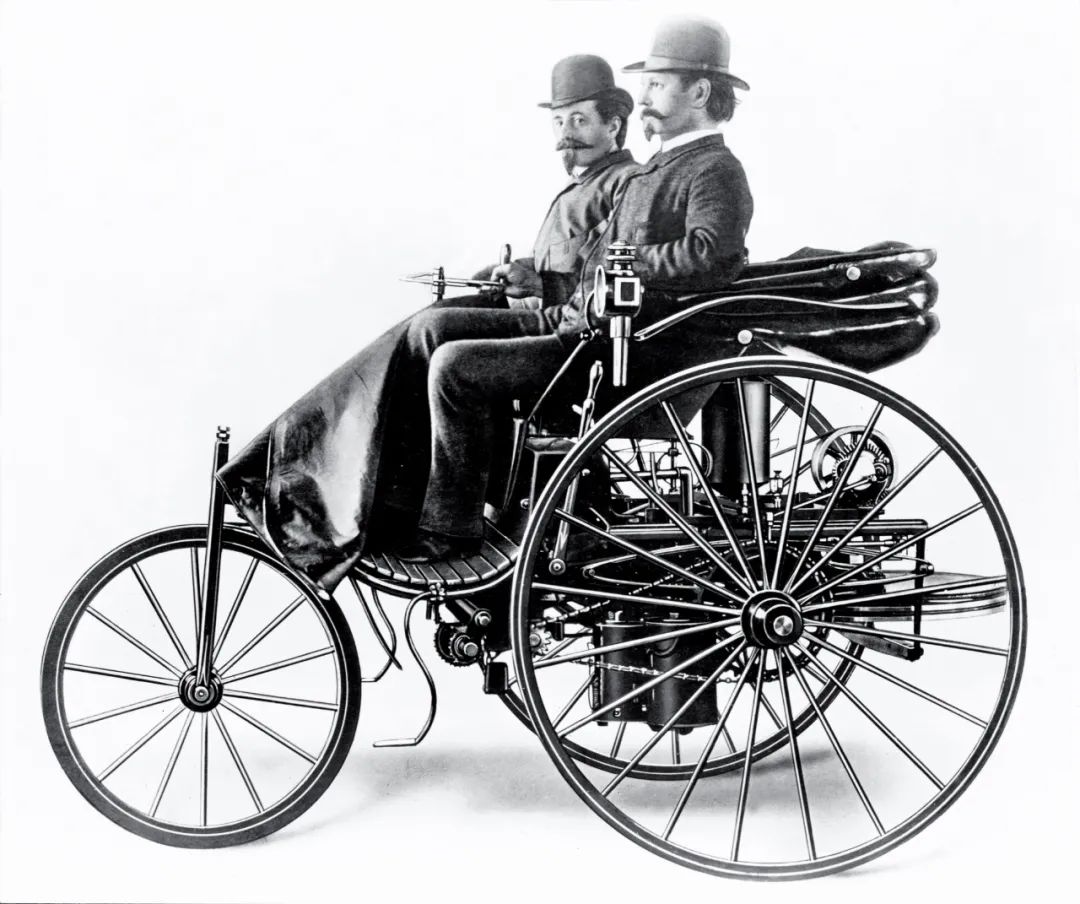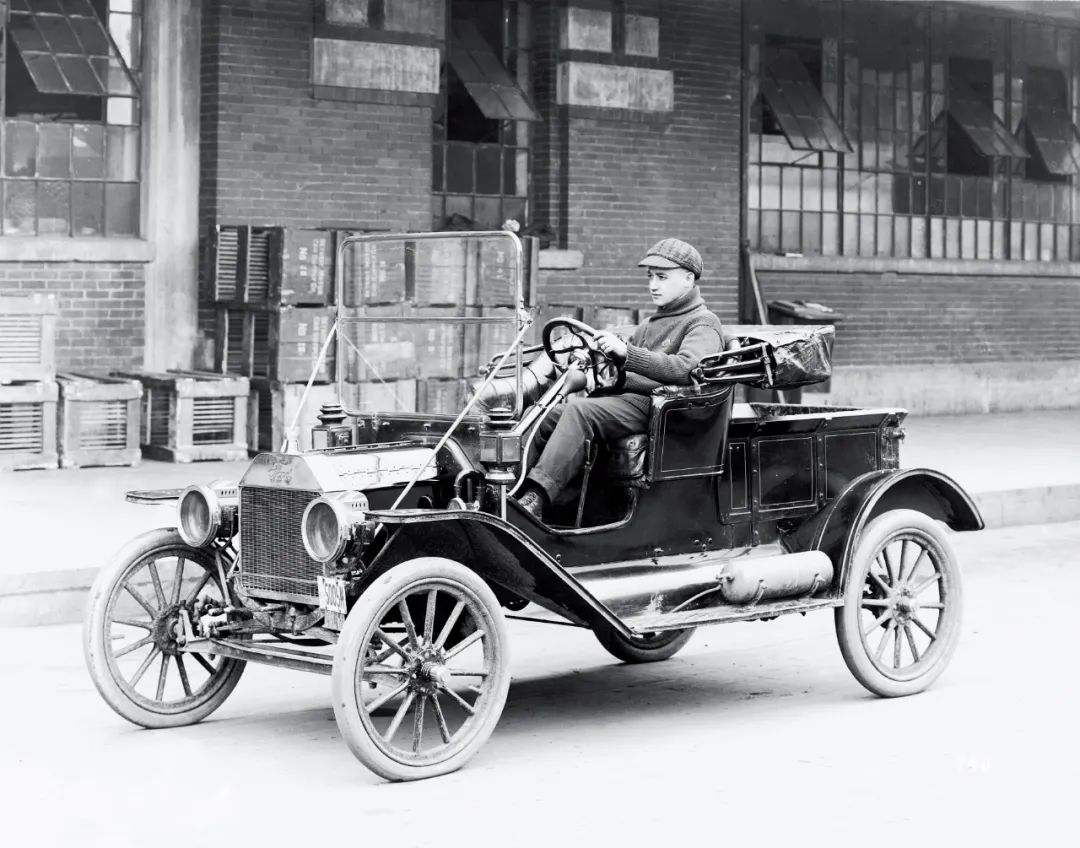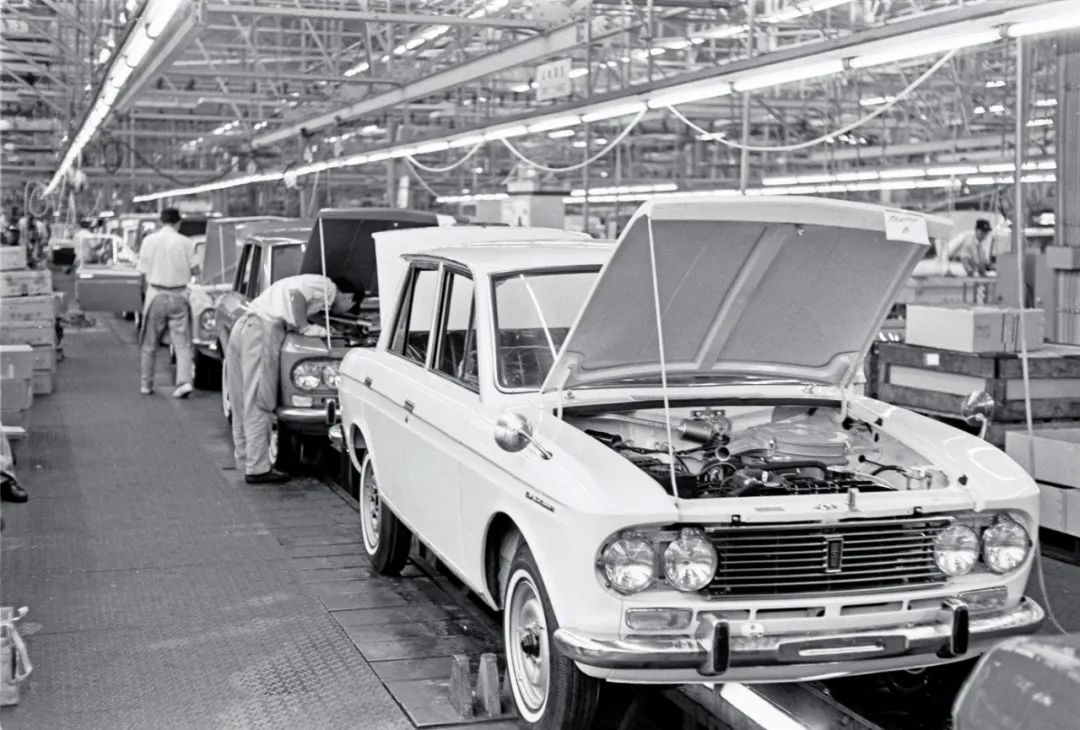Global car pattern to reshape the night before
Author:China News Weekly Time:2022.08.03

Global oil prices are high, "carbon neutral" wind mouth
The global automotive industry pattern is being reshaped again
Since the first world -recognized car was manufactured, it has only experienced more than 130 years, but it has spanned for three centuries.
This period of history is not long, but it is strange. To this day, in the past 100 years, how many car brands have been born and disappeared in the world.
The automotive market has always been "maverick": this long history but competitive markets in the world have always been able to give beginners' opportunities and space for survival, so there is always a lack of new brands entering the game; the birth and disappearance of new brands are not surprising. Over the years, the old brand has been expanding from rapid expansion to slump in a market for several years, and it is also very common, so the story of "exit" is also often staged.
This is a market that opens to unlimited possible, and it is also a market that is cruel to face life and death test. For more than a century, every huge change in the world's automotive industry has traces.
Faculty: Germany laid the foundation of the automotive industry
The world's first car is a "tricycle" made by Karl Benz in 1886.

In 1886, Karl Benz in Germany drove his own "tricycle". Photo/Visual China
However, the inventor did not have the courage to drive the machine that was regarded as a monster at the time. Until 1888, his wife Bertha drove the car from the factory to his parents' house, and opened an unprecedented "self -driving tour". At a distance of 106 kilometers, she drove for 12 hours and finally brought the car into the public vision. During the 2019 International Women's Day, Mercedes -Benz released a short film "Journey to All" adapted from this story to commemorate Bertha, the first female driver in history.
Karl Benz is one of the founders of Daimler-Benz. In fact, in the same year when he created the first car, another German engineer Getreb Daimler also installed the car engine developed by his friend Wilchm Maybach a few years ago and installed it on On the carriage bought for his wife's birthday, he created the first Daimler car.
Because it is slightly behind in time, in the history of the world's car, the first car recognized by Karl Benz is made, but Daimler created the world's first motorcycle. The two engineers created the history of the car, but they did not meet. Daimler and Mercedes-Benz were merged in 1926. All the cars produced by this have been named Mercedes-Benz, which has continued to this day.
In the past few years, the car was invented and manufactured. The second industrial revolution was at a high time of highlights. Electric lights and telephones came out one after another, and humans entered the "electrical era". After the unification of Germany through the Fa -Ping war, Germany has huge amounts of funds and rich mineral resources, which lays the foundation for the rapid development of the German industry.

Wilchm Mibach (front row left) and Paul Daimler (front row right, son of Godlob Daimler) and others took 1886 cars. Photo/Visual China
Even so, the development of the automotive industry was not smooth at the beginning of its birth. At that time, many engineers were developing cars, and countries with developed industries have successively appeared in their own car brands. But early car costs were expensive, which has been discouraged. Moreover, the performance of the car at the time and the lack of gas stations made it have no advantage in the front of the carriage in front of the carriage.
Under the premise that efficiency and price do not have the advantage, the car can only take a different approach. With the "toys" of rich people with comfort, luxury, and speed "overtaking". The German automotive industry has laid the foundation and developed. So far, it is still the country with the largest number of luxury brand cars in production and sales.
For more than 20 years after the birth of the car, large -scale production has not been achieved, but there are already a large number of capitalists, engineers, and inventors who are optimistic about the prospects of this market. During the same period, a large number of demands of ocean ships, aircraft, etc. have promoted the development of the petrochemical industry. In 1870, about 800,000 tons of oil produced around the world. In 1900, the output increased to 20 million tons.
This laid a foreshadowing for the later high -speed development of the automotive industry. In 1917, BFW, an aircraft engine manufacturing company established for one year, began to reorganize and was renamed BMW. After the initial production and sales of motorcycle cattle knife trials, in 1929, BMW announced its entry into the automotive manufacturing industry.
Audi, one of the three major brands of German luxury cars, was founded by Auguste Hohis in 1909, it was not merged by four companies: Audi, Hosch, roamers and DKW in 1932. A joint car company was established, and the Audi Four Ring came from this.
Although cars were first born in Germany, several luxury brands were concentrated in Germany, and people also recognized that Germany created the best cars in the world. But at the beginning of the 20th century, the glorious light of the 20th century belonged to the American car brand -Ford.
Explosion: The United States starts the automotive industry revolution
The year of Karl Benz's wife drove for the first time, Henry Ford was just 25 years old, and it was 8 years before he created the first car.
At the beginning of the 20th century, the large amount of oil for oil made Henry Ford's dream of creating a "carriage without a horse". In 1908, Ford Motor, which was established for 5 years, produced the first T -type car, allowing cars to really fly into ordinary people's homes and become popular consumer goods.
Before the T -type car was listed, the price of the car was thousands of dollars, and as soon as the T -type car came out, the price was as low as 850 US dollars. As a result, the World Automotive Industry Revolution began, and the way of travel has finally ushered in a long -term or even thousands of years.

In 1908, the first Ford T -type car. Photo/Visual China
In 1913, Henry Ford developed the first assembly line in the automotive industry, and the cost of automobiles and manufacturing dates fell to "unimaginable". The Ford T -type car repeatedly reduced the price, and in 1914, it even fell to $ 360. In this year, Ford's workers' daily salary was $ 5.
Therefore, for a long time in the history of the world's automobiles, when talking about cars, it was the first to push Ford. By 1921, the output of T -type vehicles accounted for 56.5 % of the world's total car output.
Henry Ford was often mentioned side by side with Thomas Edison. The former "put a wheel for the world", and the latter "completely liberated human beings from the night's restrictions." Interestingly, the two have a deep relationship, and Henry Ford was once an engineer of Edison Lighting. Not only did they have been a neighbor, they also jointly developed electric vehicles. However, by technology, electric vehicles were eliminated by the market more than 100 years ago.
In 1927, the T -type vehicle was discontinued, leaving a cumulative sales record of 15 million vehicles. This record was not broken by the beetle until more than 40 years later. In 1928, Ford defeated in 1908, and the latter became the world's automobile sales champion.
During this period, the American automobile industry surpassed Germany and became a major automobile country. In 1929 before the US economy, American car sales exceeded 5 million vehicles, becoming a veritable "country on the wheels".
At the beginning of Volkswagen's construction, Volkswagen planned the world's largest automotive factory with an annual output of 1.5 million vehicles, and strived to surpass Ford in one fell swoop. At that time, every five Americans had one car, and Germany had every 50 talents. However, Volkswagen did not usher in a high -speed development period after the first Beetle was produced. Instead, it had to be used for arms production because of the "World War II". It was not until 1945 that after the "World War II" ended, Volkswagen beetle began to produce large quantities.
The German automotive industry was hit hard in the war and almost started. By 1960, the annual output reached 2 million units in the case of a average annual growth rate of more than 20 % in ten years. Even so, Germany has become the world's second largest automobile production and exporter at that time.
That is still the golden development period of the American automobile industry. In 1972, the cumulative sales of Volkswagen beetle broke the cumulative sales record of the Ford T -type car that had been discontinued as early as 1927. The dominant position of the United States in the automotive industry lasted for more than half a century. Until 1973, the first oil crisis broke out, which triggered the worst global economic crisis after World War II, and the economy of developed countries was severely damaged.
The crisis lasted for three years, and the automobile industry in the United States, Germany, and Japan has gone in different directions. Japanese cars with a long -term fuel economy seized the opportunity and quickly rose.
Champion: Japanese car goes all over the world
After more than a hundred years of oil, the oil crisis has arrived as scheduled. After the first oil crisis broke out in 1973, two oil crises appeared in 1978 and 1990, and the entire Western economic pattern changed.
For decades, the shadow of the oil crisis has been shrouded in the shadow, and countries have embarked on the road to seeking new energy.
Two years after the production of Ford T -type car was suspended, Toyota Kisiro, the eldest son of the Japanese textile king Toyota Zoji, went to inspect the European and American automobile industry. In 1933, the automotive department was established in the "Toyota Automatic Weaving Machine Manufacturing Office". In 1937, the Toyota Motor Industry Co., Ltd. was established. This year, Ford T -type car has been discontinued for 10 years, leaving a legend of 15 million units.
Later legends belong to the rising show.
At that time, the United States and Ford and GM were well -known, and assembly factories were opened in Japan. In a country like Japan with poor natural resources, Toyota Xiro believes that the development of high -power and reliable and durable cars is very important for the Japanese automotive industry. Therefore, as early as 1939, the company established a battery research institute.
In the early days, Toyota, like many start -ups, mainly imitations, but the founder has taken a deepening consideration of his national national conditions, but after more than 30 years, Toyota was qualified Victory.
The first year before the outbreak of the oil crisis, in 1972, Toyota's cumulative output reached 10 million vehicles. For the world's automotive industry, Toyota, which has just started to enter Europe ten years ago and has just exceeded the million mark, has long been in the same day.
By 1979, after another wave of oil crisis, the situation was even more severe. Japanese cars headed by Toyota are popular in the United States, accounting for more than 80 % of the total number of imported cars in the United States. Americans even described this as "another Pearl Harbor incident." After all, in the world, the Japanese car company is too "young": Toyota Motor was established in 1937, Honda Motor was established in 1948, and Nissan Motor was established in 1933.

In 1968, a car production line in Japan. Photo/Visual China
After the petroleum crisis, it was a sharp contrast with Japanese cars that strongly entered Europe and the United States. American cars had reduced production sharply, and a large number of car sales stores and production companies closed down, with a depression. After this campaign, Germany was still gathered in luxury brands, and only Volkswagen rushed out of the siege with small cars. The automobile industry in the United States and Japan began to move towards the poles. In 1980, the output of Japanese cars surpassed the United States to become the world's number one car producer. Toyota's success in the US market once made US car companies ask the government to resist. But historical development is now irreversible. The world car pattern at the beginning of the 21st century began to take shape.
After entering the 21st century, the world's car sales topped the list and switched back and forth between Toyota and Volkswagen. The three giants in the United States: GM, Ford, and Chrysler have undergone bankruptcy crisis around 2008. The world's highest -cumulative single models are no longer Ford T -type cars, Volkswagen Beatles, but Toyota Corolla. Cumulative sales have exceeded 50 million units.
However, whether it is a Japanese car with the overall fuel economy advantage, or the Toyota Motors of Europe and the United States with hybrid technology, it has not enjoyed the joy of victory for too long. Instead, it quickly felt another wave of irreversible development trends.
Toyota's hybrid vehicle that was put into market in 1997 has taken more than 20 years to form a scale, and has gradually been recognized by the world. Originally, it was expected to largely reduce the dependence of global cars to oil energy and greatly reduced tail exhaust emissions, but the sudden wave of electricity that screamed came, which still made the world with hybrid technology, and planned to follow the hydrogen fuel cell vehicle. The relay Toyota was caught off guard.
Reshape: Under the tide of electricization and intelligence
The Germans invented the car and Americans promoted the car. But at the stage of endurance, everything will no longer follow the rules.
The growth of Japanese cars is different from Germany and the United States. There is no huge local market as a foundation, and it can only seek support for overseas market support. The dominance of the United States in the automotive industry can last for more than half a century, which has nothing to do with its long -term occupation of the world's largest production and sales country.
However, this advantage has gradually collapsed in the decades when China's automobile industry has risen rapidly. In 2009, China surpassed the United States with the advantages of more than 3 million vehicles, becoming the largest country in the world's car production and sales, which was more than 5 years earlier than the original expected time.
Today, China has become the largest consumer market in many brands worldwide. The attention of the global automobile industry has gathered in China. Chinese consumers' demand for cars also to a large extent affects the development of the global automobile industry.
Even if many brands focus on the Chinese market, Chinese automobile brands are still growing rapidly in fierce competition. According to the data released by the China Automobile Industry Association, from January to June this year, Chinese brand passenger cars sold a total of 4.891 million units, an increase of 16.5 % year -on -year, far exceeding the overall increase of 3.4 % of the passenger car market. In the first half of the year, Chinese brands accounted for 47.2 % of the total sales of passenger cars.
This is due to the comprehensive promotion of the brand upward in China, and gradually resisting the tributary of foreign car brands in terms of comprehensive strength; more importantly, Chinese automobile brands accurately seize the opportunities of the initial development of new energy vehicles and accelerate through intelligent connectivity with intelligent connectivity. Integrate to seize the opportunity.
On October 3, 2021, in the China Pavilion of Dubai, the UAE, the 2020 Dubai World Pavilion, the driverless new energy concept car "鲲" was displayed. Photo/Visual China

In fact, "electrification, intelligence, connected, and sharing", as the mainstream trend of the future development of the global automotive industry, has a consensus of the industry. The "unchanged change in the automobile industry for a century" is also an inevitable situation that has been repeatedly discussed and thought.
However, car brands that bear the century -old countries must be almost fundamentally overthrown from the original foundation and return to the starting point with a new brand. Obviously, it is not easy. As a result, the automotive industry has a more incredible scene: new car manufacturers with a single model of a single model of giant car companies have been established for less than ten years, and the market value once exceeded the century -old automobile companies.
In this huge change of Chinese car brands, it has gained a real "curve overtaking" timing. With the dual blessing of intelligence and electrification, in 2021, China accounted for 52 % of the world's new energy vehicle sales. As of May this year, this data has risen to 59 %.
Global oil prices, above the "carbon neutral" wind, the global automotive industry pattern is being reshaped again. The time for China to shift from a large country to a strong car is much shorter than expected.
Send 2022.8.8 Total Issue 1055 "China News Weekly" magazine
Magazine Title: Global Automobile Laboratory Revisible
Reporter: Zheng Yu
Operation editor: Xiao Ran
- END -
Wuhan City: The City of Hero City Civilization City
Civilization is a landscape of the city. It is a ray of warmth around you, and it is a true feelings that move you and me. Entering the city of civilization, let us feel the warmth of the city and the
Top Ten Innovation Looking at Qingdao | Activate the innovation password, surging development momentum

The smart passenger tire developed by Qingdao Soft Holdings Co., Ltd. is the world...